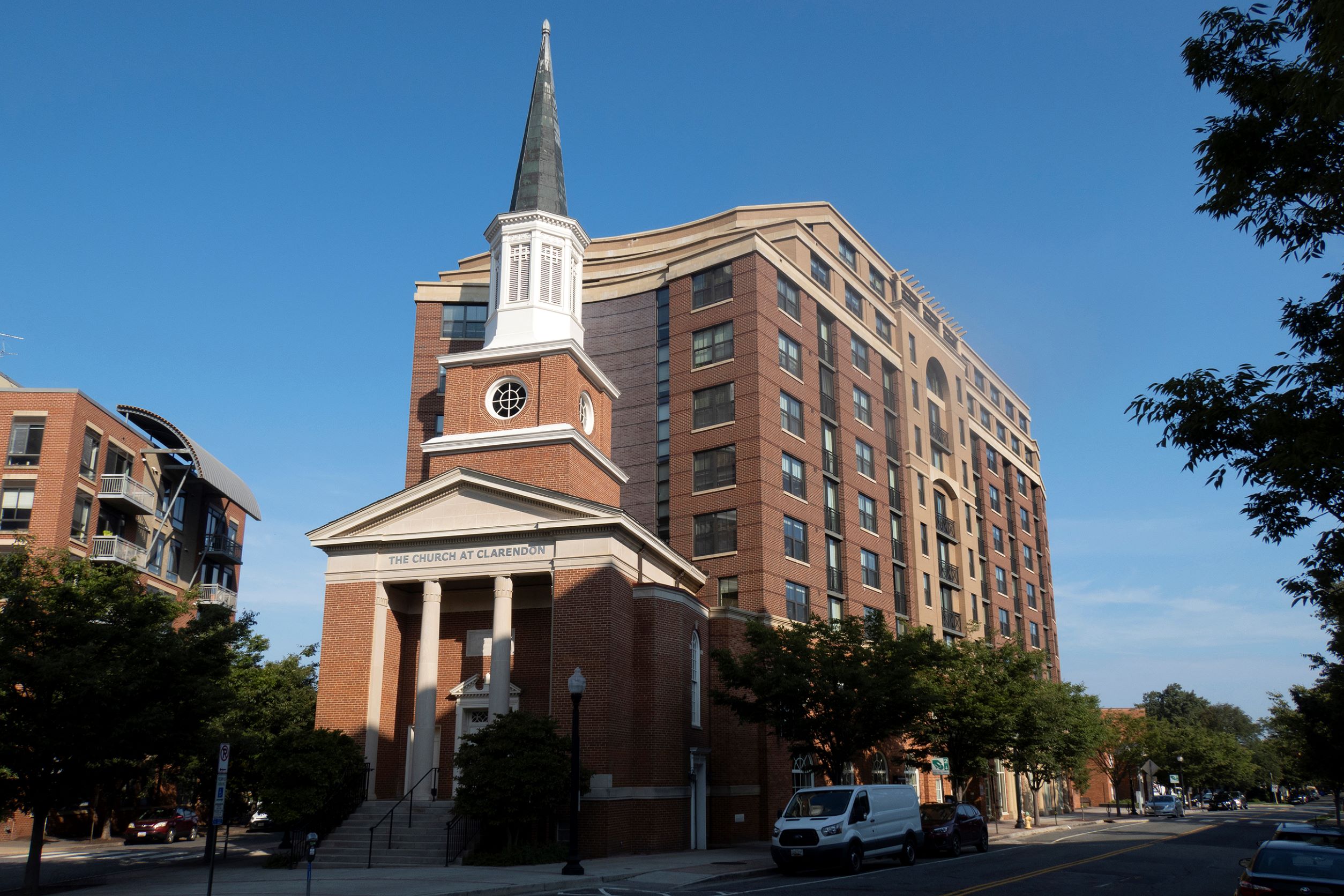Stewarding Square Footage
Stewarding Square Footage
By Starlette Thomas
Would you believe a church building is not just a sacred space for its members, but could be shared with the community? More than pews and Sunday school classrooms, what if a church was used outside of Wednesday nights and Sunday mornings?
What if, in addition to a gathering place for worship and discipleship, a church was used to provide low-income housing and a place of learning?
Church-building renovations typically seek to improve the existing structure and to keep up with the changing needs of the congregation. We’ve all experienced a church giving campaign or two, where we were invited to pledge to give to the “building fund.”
This fund is often used for building maintenance and repairs. Sometimes the members decide a new building is needed for any number of reasons, including a growing congregation. But what about a growing community?
What began as the First Baptist Church of Clarendon in Arlington, Virginia, then a community of ten thousand residents, became a multipurpose building for a city of nearly forty thousand. It was the church’s third renovation, and the leaders decided to mix things up a bit.
Like so many congregations throughout the United States, theirs was graying, and the building was aging. The members could no longer keep up with the financial responsibilities due to the rising costs of a property that now serviced only one hundred members each week.
The church’s leaders saw it coming. The attendance began to decline in the 1970s. It was inevitable, and the leaders decided they needed to take decisive action to ensure that both the building and the opportunity to worship in it remained.
So, with the approval of Arlington County, the church’s leaders sold its “air rights” to a developer for $5.6 million in exchange for an eight-story apartment building with 60 percent of the units designated to provide affordable housing for low-income tenants. The two-story church would also be renovated and maintain its Georgian façade and steeple. According to the church’s website, “The church steeple remains in place, a beacon that shows the building is a place of worship.”
The John Leland Center for Theological Studies as well as a child development center would return to the church’s educational building. “It’s a great move for Leland,” said Mark Olson, the seminary’s president. “It’s in the middle of a very urban environment, close to a busy Metro stop and very accessible to anyone in the D.C. area. There are tons of young people, especially at night. It’s an exciting place to be for a seminary that wants to be on the cutting edge.”
Completed in 2012 and renamed the Church at Clarendon, the building serves its community by sharing its square footage. For two years the church’s members had been meeting all over the neighborhood, and now they would welcome neighbors to their new home.
Rev. David Perdue, the church’s interim senior pastor at the time of the renovation, said, “We’re reintroducing ourselves to the community. . . .We’re prepared to receive visitors and let them know: this is who we are.”
Sources
“Our Story: How It All Started . . . ,” The Church at Clarendon, accessed October 19, 2022, https://www.1bc.org/our-story.
“Church at Clarendon prepares for ‘Homecoming,’” ARL Now, February 22, 2012, https://www.arlnow.com/2012/02/22/church-at-clarendon-prepares-for-homecoming.
Jim White, “Updated: Leland Center moves to church complex in Arlington,” Baptist News Global, September 27, 2011, https://baptistnews.com/article/updatedlelandcentermovestochurchcomplexinarlington/#.Y4eNhOzMJ_Q.
This story is part of Lake Institute’s story collection, the Faithful Generosity Story Shelf, which highlights congregations and other religious organizations who have sought to use their assets and resources in creative—and sometimes surprising—ways as an expression of faithful giving.
Each entry in our Story Shelf is short enough to be read and discussed during a committee meeting or other group gathering. Our hope is that these accessible vignettes will spark new questions, conversation, and imagination among clergy and laity about what might be possible with the funds, buildings, land, and other resources in their care. If you know a story that should be included in the Story Shelf, suggest it here.
Subscribe
Insights, a bi-weekly e-newsletter, is a resource for the religious community and fundraisers of faith-based organizations that provides:
- Reflections on important developments in the field of faith and giving
- Recommended books, studies and articles
- Upcoming Lake Institute events

